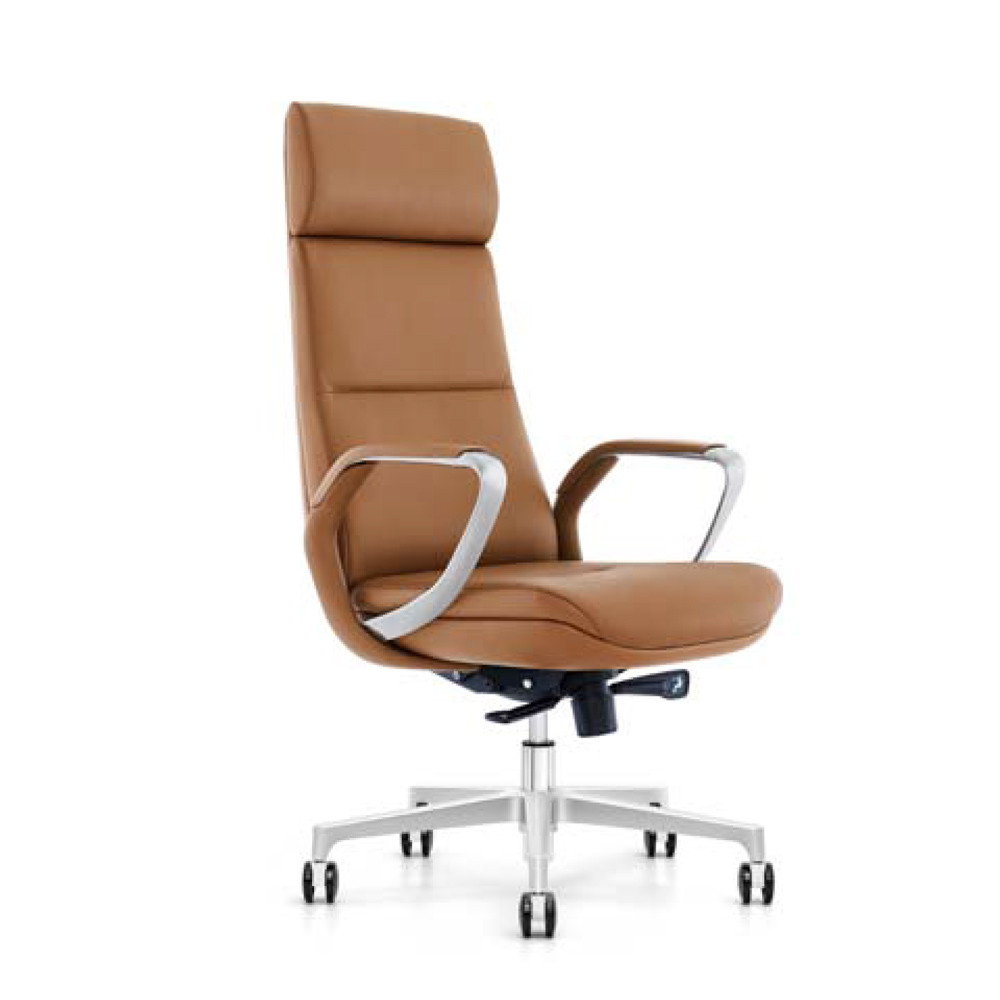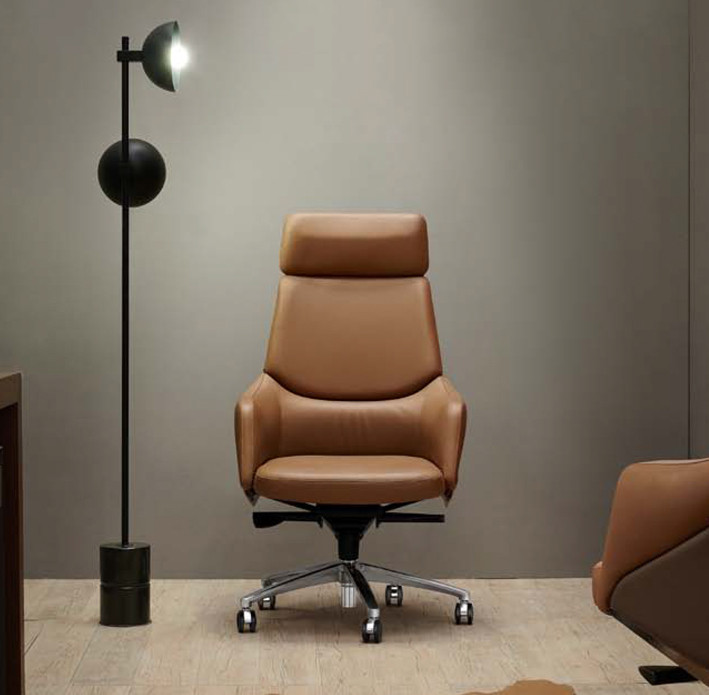
Do Leather Office Chairs Work for Long-Term Comfort?
Introduction
Leather office chairs are a hallmark of executive style and luxury, often found in boardrooms and high-end home offices. But beyond their sleek appearance, a common question arises: do leather office chairs actually provide long-term comfort? This article explores the design, ergonomics, and material properties of leather chairs to determine if they are a smart choice for those who spend hours at their desks each day.
1. Comfort Begins with Cushioning
Leather chairs are typically designed with plush padding to offer immediate comfort. High-density foam beneath the leather provides a soft yet supportive feel, making them appealing for extended use. However, the effectiveness of this cushioning depends on the chair's overall design and support system.
2. The Feel of Leather Against the Skin
Leather offers a smooth, luxurious texture that many find pleasant. It feels cooler to the touch initially, which can be refreshing in warm climates. Over time, genuine leather conforms slightly to your shape, adding to the comfort. However, in hotter or more humid environments, leather may cause some stickiness without proper ventilation.
3. Supportive Structure Matters Most
Comfort in leather chairs doesn’t solely depend on material. The presence of lumbar support, adjustable tilt, and high backrests are critical factors. When paired with these ergonomic features, a leather chair can be just as supportive as any mesh or fabric alternative.
4. Heat Retention and Breathability
One downside to leather is its low breathability. In long sitting sessions, especially without AC or ventilation, the chair can become warm. Some models compensate with perforated leather or built-in cooling features, which help mitigate heat retention.
5. Durability Enhances Long-Term Value
Genuine leather is highly durable, aging gracefully when well-maintained. Unlike fabric, it resists tears and stains, offering a solid return on investment. Over time, it develops a rich patina that adds to its aesthetic value without compromising structure.
6. Easy Maintenance Routine
Leather is relatively low-maintenance. A quick wipe with a damp cloth usually removes dust or spills. Conditioning the leather every few months helps maintain its softness and prevent cracking. Compared to mesh or fabric, leather tends to be easier to keep looking new.
7. Aesthetic Comfort Counts Too
Visual appeal contributes to a comfortable workspace. Leather chairs exude professionalism and status, enhancing the overall work environment. For some users, working in a space that feels upscale can also boost morale and focus.
8. Weight and Mobility Considerations
Leather chairs tend to be heavier than their mesh counterparts due to dense padding and solid frames. While this adds to their stability, it may reduce ease of movement. Look for models with smooth-rolling casters and swivel bases to maintain mobility.
9. Versatility Across Environments
Whether you’re furnishing a home office or a corporate suite, leather chairs work well in diverse settings. Their timeless appearance complements both modern and traditional décor. However, in spaces without climate control, breathability becomes a more significant factor.
10. Cost vs. Comfort Trade-Off
Leather office chairs are typically more expensive than fabric or mesh options. That said, the durability, appearance, and plush comfort often justify the higher price—especially for users who prioritize long-term use and aesthetics in equal measure.
Additional Considerations When Choosing a Leather Office Chair
Prioritize Ergonomics
Even the most luxurious leather won’t compensate for poor ergonomics. Make sure your chair includes lumbar support, tilt lock, and adjustable height to accommodate your sitting style.
Choose the Right Leather Type
Full-grain and top-grain leathers offer the best durability and comfort. Bonded leather may look similar but lacks the resilience and longevity of higher-grade materials.
Assess Room Climate
If your office gets warm, consider a chair with perforated leather or breathable design elements to avoid heat buildup during long sessions.
Pay Attention to Armrest Padding
Well-padded armrests can relieve shoulder tension. Some leather chairs come with fixed arms, while others offer adjustable options for better alignment.
Look for a High Back Design
A high backrest supports the entire spine, including the neck and shoulders, making the chair more suitable for extended work periods.
Confirm Weight Capacity
Ensure the chair’s frame is built to handle daily use and your body type. Solid base materials and sturdy construction are essential for long-term comfort.
Test Reclining Support
A tilt mechanism with tension control lets you lean back comfortably without sacrificing posture, which is particularly useful during breaks.
Balance Style with Function
While leather chairs are undeniably stylish, avoid choosing a model solely for looks. Focus on comfort features that match your work habits.
Check the Warranty
Long-term comfort also means peace of mind. A warranty on the chair’s structure, upholstery, and parts is a sign of quality construction.
Don’t Forget Floor Compatibility
Some leather chairs are heavier and may scratch delicate flooring. Consider adding a mat or choosing wheels designed for your floor type.
Recommended Products:

-
Musu Executive High Back Chair – Leather
A refined executive chair featuring rich leather upholstery, ergonomic lumbar support, and a tall back for superior comfort across long workdays.
-
Mambi Executive High Back Chair – Leather
Designed for both elegance and performance, this high-back leather chair offers plush seating, padded armrests, and tilt tension control for all-day support.
Final Thoughts
Leather office chairs offer a blend of elegance, durability, and comfort that can easily suit long-term use—provided they include proper ergonomic features. While they may not be the most breathable option, the support and luxurious feel they offer make them a worthy investment for users who value both style and substance. For the right workspace, a well-constructed leather chair can deliver comfort that lasts for years.
FAQ
Q: Are leather chairs comfortable for all-day sitting?
A: Yes, if the chair has proper ergonomic support. The leather material itself is soft and durable, but lumbar support, recline control, and seat design are key to long-term comfort.Q: Do leather chairs get too hot?
A: Leather can retain heat, especially in warm environments. Choosing models with perforated leather or ensuring good room ventilation can help reduce discomfort.


